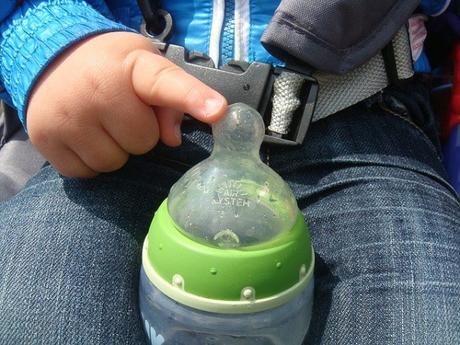April 17, 2018 Leave a Comment
Share Tweet Pin +1Shares 0Needless to say, being a new mom is tricky at best. You have plenty of responsibilities and matters that need attending to. But at the end of the day, it’s an entirely rewarding experience that will leave you feeling happy and accomplished. As any Mom who has successfully fed her baby for the day will tell you!
Feeding time is one of the most important moments of the day for your baby. After all, whole and organic foods are an excellent source of vitamins, minerals and other nutrients. These ensure that your little one develops properly in all aspects. Knowing what to avoid is equally significant, especially when it comes to food allergies.
Making the transition from milk to solids is difficult for both child and parents. Fortunately, foreseeing any issue is easy when you have the proper knowledge. Here are four of the most common weaning mistakes that moms tend to make, as well as a few tips on how to avoid them.
3 Most Common Weaning Mistakes Moms Make

1. Introducing Too Many Foods

Once the time is right to start introducing new ingredients into your baby’s diet, you might be tempted to have him, or she try it all. Nevertheless, you need to think like a toddler. Imagine eating the same thing for six months. Then, suddenly you are bombarded with an endless array of tastes, flavors, textures,and colors. Without a doubt, it will feel strange.
Therefore, it’s vital to integrate foods gradually. Fruits and vegetables are great to start. And if the little one has problems processing them at first, you can always blend them into a delicious smoothie. All you need are the best organic ingredients and a quality smoothie maker. You can easily find one by consulting some smoothie maker reviews and seeing which suits your needs.
Nevertheless, if the fruits and veggies are ripe, they will be able to chew and digest them either way. Soft foods such as cooked egg yolks or pasta are also options with plenty of potential. And if you’re looking for some adequate meats, shredded and moist chicken or flaky fish is something to be considered.
Sooner or later, he or she will be ready to try finger foods too. This expands dietary options and introduces plenty of variety to the menu. Furthermore, it’s amazing for developing motor skills in toddlers, so your baby will also have a firm grip in no time at all. And if you’ve got a fussy eater on your hands, these are perfect because it gives them a choice.
2. Waiting Too Long to Wean

One of the most common weaning mistakes young moms make is waiting too long. Your baby gets all the necessary nutrients from breast milk or formula until the age of six months. After this point, these will no longer suffice. Therefore, if you haven’t started the transition towards solid food now, it is recommended that you do.
According to Lynsey Bradley, a Sydney-based child nutritionist, delaying the process past the age of seven months leads to allergies and other complications. What is more, it also provokes an iron deficit and turns your child into a fussy eater. Therefore, if your little one is six months old, it’s time to introduce a few pieces of fruit and veggies in his or her diet.
Red and orange vegetables such as carrots, tomatoes or peppers are a perfect starting point. They are full of essential vitamins and nutrients, and they have a pleasantly sweet taste too. As for fruit, your child will surely appreciate apples and pears. One or two teaspoons to start is just enough. And for a fun and tropical twist, avocados are extremely nourishing.
3. Forcing the Process

Many new mothers mistakenly expect that once their little one has passed the six-month mark, they’ll be ready to transition from breast milk and formula directly to foods and that will be that. If you’re lucky, your baby will simply lose interest in breastfeeding and start craving other nutrients. But most of the time, weaning is an entire process, not a single event.
Having patience is essential in this case. One tactic would be to postpone the feeding using time pointers your toddler can understand. For example, you can tell him or her that feeding time will take place after you finish reading a book, or when playtime is over. This will act as an incentive and might kickstart the activity.
Whatever the case might be, understanding the toddler’s signals is crucial. If he or she dislikes a food, it will be obvious from their reaction. Furthermore, when they start throwing it around, they most likely want the meal to end.
Successfully weaning your baby is tricky, but as long as you pay attention to signs, everything should be fine. When he or she passes the age of six months, it’s time to kickstart the transition. Be gentle, yet firm, and you and your little one will be just fine.

Author
Amanda Wilks is a freelance writer and passionate cooking enthusiast. She writes for nutrition and recipe blogs like Bon Vita Style, Saute Magazine and Simple Nourished Living.
Share Tweet Pin +1Shares 0Filed Under: Babyled Weaning, Nutrition Tagged With: parenting, parenting hacks, parenting tips, weaning, weaning your baby
